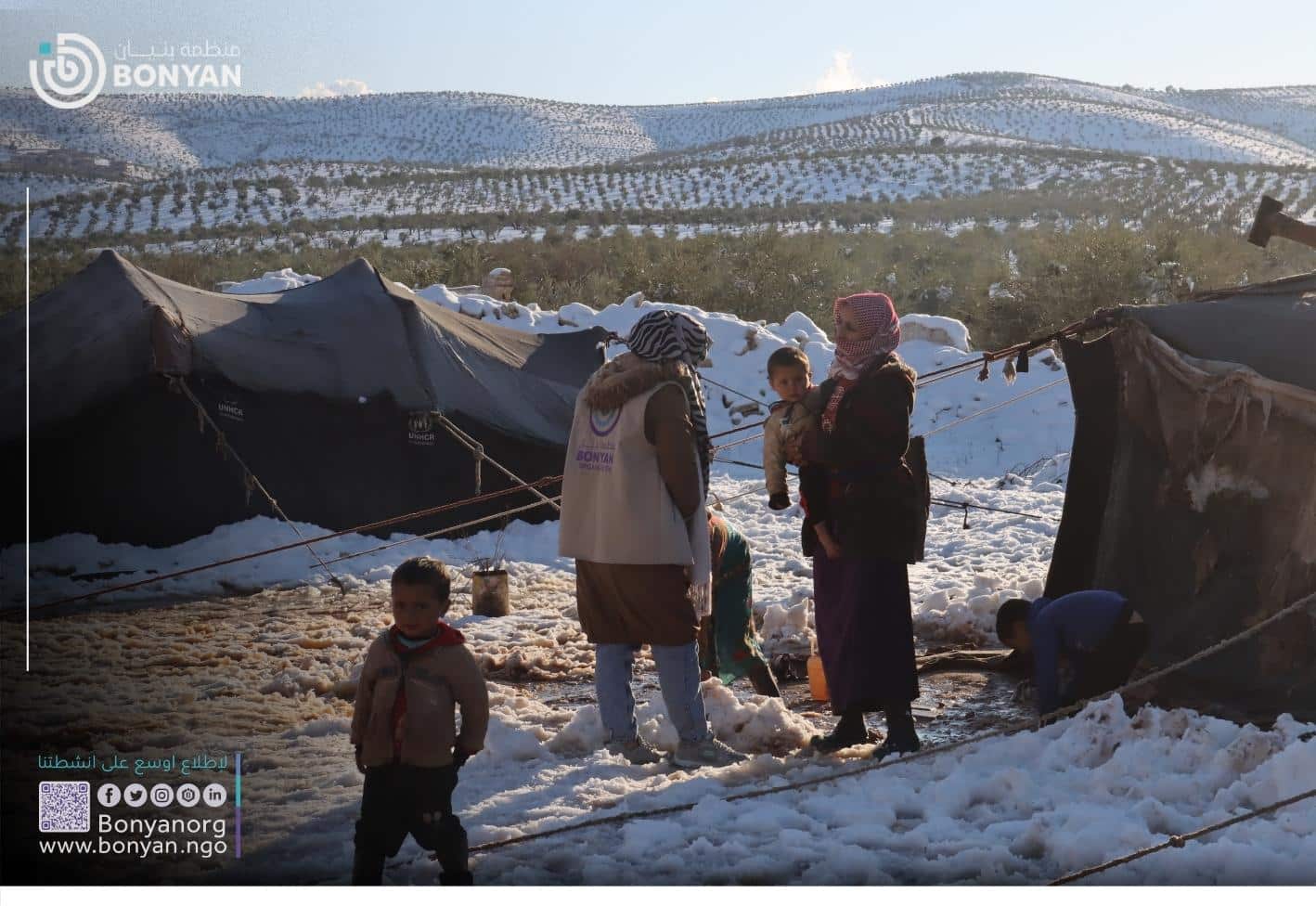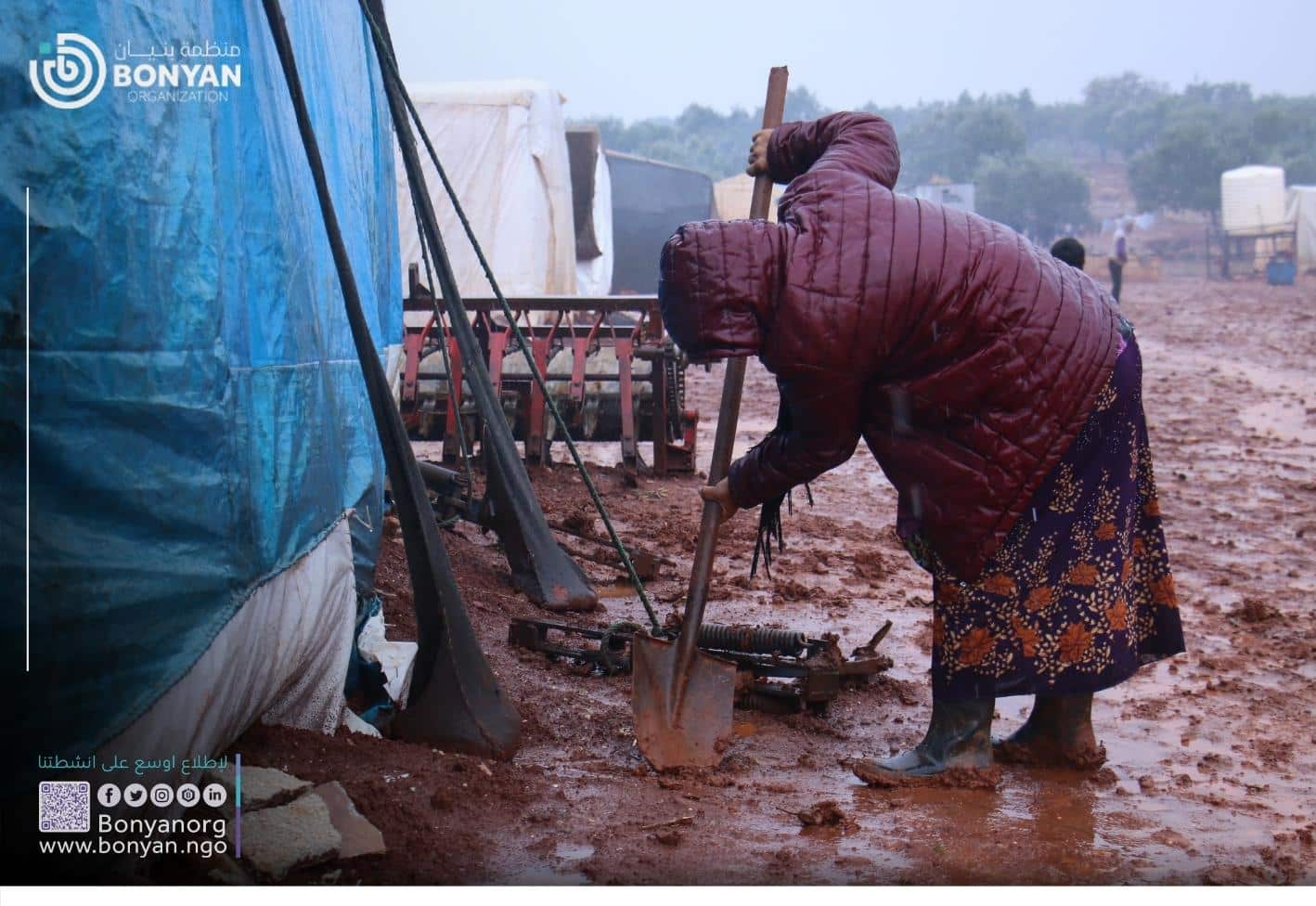Since the beginning of the revolution in Syria, Syrian women have been present in every field and place. With the progress of the revolution years, women and girls began to pay the price for the freedom of the Syrians. Their struggle and their quest to reach their dream of establishing a democratic state in which all Syrians live in safety, but they faced complicated circumstances.
The difficulty since the beginning of the revolution in 2011, when women were forced to flee and walk side by side with men to bring their families to safety and face great dangers. In addition to the pain of displacement and asylum.
Syrian women have been subjected to persecution, arrest, and torture. The Syrian Network for Human Rights says that Syrian women are still suffering from the worst patterns of violations. The network documented the killing of at least (28,316) females, while at least (9,668) women are still under arrest or enforced disappearance.
Security Threats to Syrian Refugee Women
Over the years of the war and the various parties’ pursuit of their interests, most of the rights of Syrian women were lost and the suffering burdened them in all aspects of life, socially, economically, and politically, most notably:
- Violence and physical attacks.
- Early marriage and sexual abuse.
- High marriage age and spinsterhood.
- Low standard of healthcare.
- Psychological crises and social insecurity.
- Unemployment and the emergence of the phenomenon of breadwinners.
- Deprivation and drop out of education.
- The limited participation of women in political life.
- Honor crimes and identity loss.

Rights and Legal Status for Syrian Refugee Women
Women participated in the protests in Syria side by side with men, which put them in front of one reality with them of persecution, assassinations, and extortion, and with the course of the protests turning to militarization, the Syrian woman activist, nurse, and volunteer emerged, and she paid the heaviest price and became the breadwinner in the absence of the man.
Education for Syrian Refugee Women
Education is the sector most affected by the bombings and displacement. Women have been deprived of education either by dropping out of it due to early marriage and craftwork to help the family or by reducing the financial burdens and the family’s inability to bear the difficulties that may hinder the completion of their daughters’ education. Among the challenges that the education sector faces are:
- There are no schools in refugee camps.
- The distances between camps and schools.
- Poor financial conditions that prevent them from buying school supplies,
- Paying the high transportation costs due to the scarcity of fuel oil.
- Lack of identity papers for some girls.
- The interruption of support for educational facilities, especially in the north of Syria.
- Weak capabilities of academic cadres and institutions and their damage from bombing or eviction operations due to continuous military escalation.
- According to the statistics of the Syrian Observatory, “The illiteracy rate among Syrian women has reached about (30%) due to the fragility of the curricula and poor educational performance.”.
Healthcare for Syrian Refugee Women
Syrian women and their families suffer from a significant decline in health. The continuation of the conflict and security disturbances has led to the spread of diseases and high death rates among them, especially since women are the most vulnerable group due to the decrease in the number of deliveries subject to specialized medical supervision.
The lack of access to On prenatal and postnatal services is due to several factors, most notably:
- Poor living conditions, especially with the increase in displacement and refugee operations, and the accompanying inhumane conditions in the camps, such as the lack of medicines, tools, devices, and medical materials.
- Malnutrition due to contamination and scarcity of food and water in some areas, and the failure of several international organizations to perform their role to the fullest extent towards women and their families.
- Corruption and thefts that relief funds are exposed to do not reach the Syrian families who are entitled to them.
Employment for Syrian Refugee Women
With the great disintegration in the structure of the industrial sector and the interfaces of economic projects, the fronts of projects, and their returns to the outside, and return to a difficult task that requires a muscular effort that does not correspond to its nature, such as;
1- Agriculture.
2- Civil defense work.
3- And selling on the wall roaming in the streets.
Especially women who played the role of the breadwinner for their families after losing the head of the family, and the increasing number of widows in Syria, while in some areas controlled by radical extremist elements, they are forced to leave them and stick to their homes, as the unemployment rate for women in these areas reaches 95%.

Labor Force Participation Before and After Displacement
The labor market in regime-controlled areas is witnessing an increasing turnout by women who have begun to enter work sectors, professions, and crafts that were previously the preserve of men, a shift imposed by the new demographic reality on Syrian society, which the regime established for since the beginning of its war against the Syrian revolution in 2011. In addition, the deteriorating economic reality played an important role in pushing more women to join the labor market.
The increasing demand for Syrian women to work appears positive in terms of general appearance, but it hides behind the real suffering experienced by the majority of working women. The difficulties they suffer are summarized in the types of jobs and professions;
- Require great muscular and psychological effort.
- Staying long hours away from their homes and the resulting stagnation.
- Low wage rates.
- The lack of experience and qualifications for many of them in obtaining jobs.
- The difficulty of getting a job in the public sector without paying bribes to intermediaries and “brokers”, exploiting them in the private sector.
- Absence of laws that guarantee women’s rights.
Marriage for Syrian Refugee Women
The vulnerability of young women and girls in areas of displacement has also led to a dramatic increase in cases of forced child marriage. Out of fear of sexual violence, many families resort to hastily marrying off their daughters for protection or out of fear for the girl’s “honor.”
Child marriage under the age of 18 tripled among refugees in Jordan in 2014. Refugee women in Turkey also cite pressure to marry as the most serious challenge they face. According to the United Nations, marriage under the age of 18 was common among Syrian rural families, but now girls younger than 13 and 14 are married, often to men much older than them. While the minimum age for marriage in Syria is 16 for girls, it is 18 in Turkey and Jordan, and although exceptions are rare in the latter, it is likely to happen. Thus, in both countries, the marriage of girls under the age of 18 is illegal.
Likewise, the case for many girls ends up becoming the second or third wife. In Turkey, where polygamy is illegal, it has practically disappeared, but it has begun to resurface again, and this means that many of these “marriages” are illegal, as is the case in a customary marriage, or traditional marriage, in Jordan and Lebanon, which are not documented appropriately, leaving women with little legal protection.
Programs and Projects for Supporting Syrian Women
The United Nations has identified a period from November to December 10 as 16 days of activism to end gender-based violence. The conflict in Syria, and conflicts of displacement, puts Syrian women at risk of gender-based violence.
These organizations provide women with psychosocial care, skills workshops, training for financial independence, support groups, and community encouragement to prevent GBV.
- Women for Development Now.
- Souriyat Across Borders.
- Women and Girls Oasis.
- Women’s Community Center in Kilis.
- NuDay Syria.
- Syrian Civil Defense.
- Vision, not Victims.
- Doctors Without Borders (MSF) Mother-and-Child Hospital.
- The Amani Campaign.
Read More



